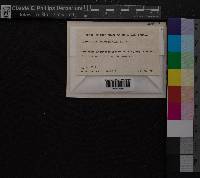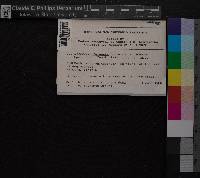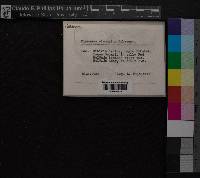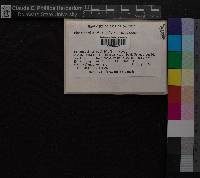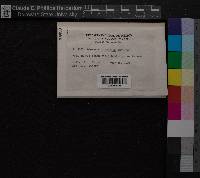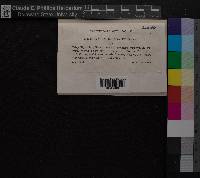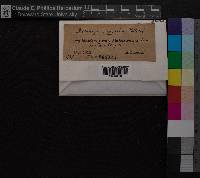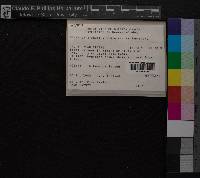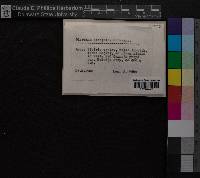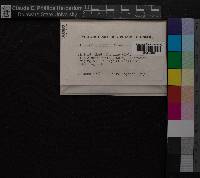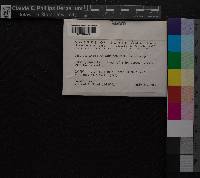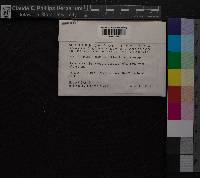Dicranum elongatum
|
|
|
|
Family: Dicranaceae
|
Plants in compact tufts, yellowish green to light green, glossy. Stems 2-10 cm, tomentose throughout with reddish brown rhizoids. Leaves erect-spreading, erect-appressed to rarely spreading when dry, apex sometimes flex-uose, smooth, (2.5-)3-4.5(-6) × 0.3-0.5 mm, from a lanceolate base to a long, fine, tubulose subula, apex usually acute, sometimes apical leaves of stems blunt, julaceous; margins entire, rarely slightly denticulate at apex; laminae 1-stratose; costa percurrent or shortly excurrent, 1/6-1/4 the width of the leaves at base, smooth or weakly rough above on abaxial surface, abaxial ridges absent, with a row of guide cells, two stereid bands not extending to apex, adaxial and abaxial epidermal layers of cells usually not differentiated or sometimes a few cells in both layers enlarged; cell walls between lamina cells slightly bulging; leaf cells smooth; alar cells 1-stratose or 2-stratose, well-differentiated, not extending to costa; proximal laminal cells usually elongate, pitted, (14-)24-36(-49) × (2-)4-6(-9) µm; distal laminal cells short-rectangular, quadrate, rounded, or sometimes irregularly shaped, incrassate, not pitted, (5-)12-17(-23) × (4-)6-8(-9) µm. Sexual condition dioicous; male plants as large as females; interior perichaetial leaves abruptly short-acuminate, convolute-sheathing. Seta 1.5-2 cm., solitary, yellowish to yellowish brown or reddish yellow. Capsule 1.2-1.8 mm, nearly straight and erect to slightly arcuate, striate when dry, yellowish brown; operculum 1.2-1.8 mm. Spores 17-22 µm. Capsules mature in summer. Common in arctic or alpine tundra, soil, rocks or soil over rocks, rock ledges, cliff shelves, rarely decayed wood and stumps; sometimes in bogs and fens; 30-3700 m; Greenland; Alta., B.C., Man., Nfld. and Labr. (Nfld.), N.W.T., N.S., Nunavut, Ont., Que., Sask., Yukon; Alaska, Colo., Maine, Minn., Mont., N.H., N.Y.; Europe; Asia. Dicranum elongatum is easy to recognize because the plants are relatively small, slender, glossy, and grow in dense, compact tufts. The leaves are short, narrow, usually less than 6 × 0.5 mm, ending in a long, fine, tubulose subula, acute at the apex, smooth or nearly so on the abaxial surface, and have entire margins or rarely some denticulations at the apex. Capsules, which are not uncommon on plants in some arctic localities, are short, less than 2 mm, straight and erect to slightly arcuate, smooth but striate when dry. Dicranum elongatum can readily be confused with the closely related D. groenlandicum. They both are arctic-alpine species sharing nearly the same type of habitat with almost the same distribution. They can usually be readily distinguished in their typical form but there appear to be many intergradations that cause difficulty. Dicranum groenlandicum has narrowly obtuse leaf apices and cells that are pitted to well above the middle of the leaf in contrast to the acute leaf apices and cells that are pitted only up to the middle of the leaf in D. elongatum. E. Hegewald (1972) found that the pits in the leaf are the most reliable means of separating difficult specimens of Finnish plants. H. A. Crum and L. E. Anderson (1981) expressed doubt as to whether the two are genetically different. Both D. elongatum and D. groenlandicum often bear at the apex of some stems julaceous shoots with small, ovate, broad leaves with obtuse apices. This can lead to the misidentification of some plants of D. elongatum unless the leaves in the basal part of the stems are always used to determine the shape of the leaf apices.
|


